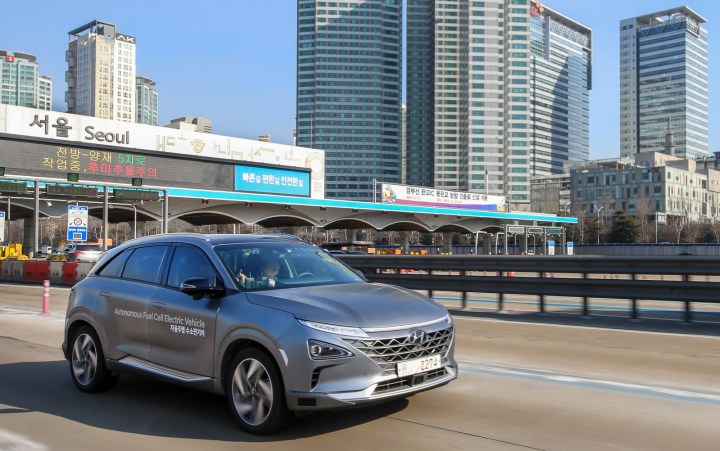
But aside from the green aspect of the journey, Hyundai is also touting the speeds its self-driving cars managed to reach. Throughout the entirety of the journey, the vehicles maintained a speed of between 62 and 68 miles per hour. While those figures in and of themselves may not be all that impressive, we ought to remember that most other tests are conducted at significantly slower speeds (and for good reason — you certainly don’t want driverless cars barreling down the road at you at breakneck speeds).
In total, Hyundai saw five vehicles complete the journey. Three of them are based on Hyundai’s fuel cell electric SUV NEXO, which is slated to be released in South Korea next month, while the other two are Genesis G80 autonomous vehicles. All five feature level 4 self-driving tech, and are said to “closely represent Hyundai’s three visions for future mobility: connected mobility; freedom in mobility; and clean mobility.”
In order to complete their journeys, human operators simply pressed the “Cruise” and “Set” buttons on the cars’ steering wheels. At this point, the cars switched to their self-driving mode, and upon entering the highway, were able to move responsively to the natural flow of traffic. The vehicles were autonomously capable of executing lane changes and overtaking slower cars, and managed to navigate through toll gates using Korea’s wireless expressway payment system.
“Hyundai’s philosophy for developing autonomous driving technology is to provide the highest level of safety combined with a high standard of convenience that our customers expect,” said Jinwoo Lee, head of the Intelligent Safety Technology Center at Hyundai Motor Group. And when combined with the company’s fuel cell technology, this convenience is also eco-friendly. The NEXO fuel cell electric SUV, for example, can drive more than 600 kilometers (372 miles) on just one charge, which takes about five minutes to complete.


